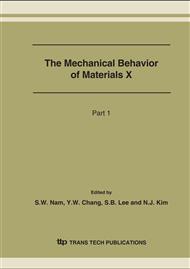p.533
p.539
p.545
p.549
p.553
p.557
p.561
p.565
p.569
Prediction of Breakdown Transition of Creep Strength in Advanced High Cr Ferritic Steels by Hardness Measurement of Aged Structures at High Temperature
Abstract:
Recent researches have shown the premature breakdown of creep rupture strength in long term creep region of advanced high Cr ferritic steels. As safe operation of power plants becomes a serious problem we should be able to detect and predict the breakdown transition of creep rupture strength. Some methods for detecting the breakdown transition have been presented till now like the measurement of reduction of area after creep rupture and particle size of laves phase. However it will be more economic if we make use of non-destructive tests, for example, hardness testing. In this paper 3 types of ferritic steels with different Cr concentration have been studied. The results suggest that the hardness of aged structures is constant independently of exposure time in short term region, whereas the hardness breaks down in long term region. The boundary of breakdown in hardness coincides with that of breakdown in creep rupture strength.
Info:
Periodical:
Pages:
553-556
Citation:
Online since:
August 2007
Price:
Сopyright:
© 2007 Trans Tech Publications Ltd. All Rights Reserved
Share:
Citation:


